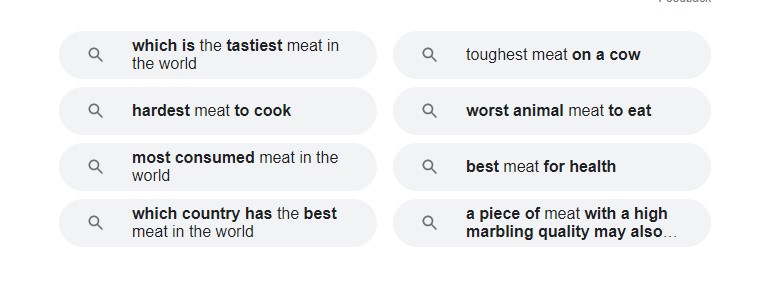Andrew Zimmern picks

Andrew Zimmern, whose stomach has hosted more animals than Noah’s Ark, has made a career vicariously eating on behalf of the unadventurous among us. On Travel Channel’s Bizarre Foods, Zimmern seeks out food cultural traditions in the locales he visit, and if it means snacking on fresh cow placenta or a still-beating frog’s heart, he’ll swallow it down without a second thought. His newest series, The Zimmern List (Tuesdays at 9 p.m. Eastern on the Travel Channel), retains that same sense of culinary exploration, but using the city’s cabbies to guide Zimmern even further off the grid.
Zimmern has stopped counting the number of species he’s consumed his decade on air, though it’s likely in the thousands. If there’s anyone in the world who could declare with authority which animal tastes the best or worst, it’s Zimmern. So we asked him.
Best-tasting animals
Kudu
Andrew Zimmern: Probably the best meat I’ve ever eaten is freshly killed kudu in South Africa. It’s a small, hooved animal, one of 20 in the African venison family—antelopes are in there. But kudu itself, the meat is pale pink, light, and sweet—a beautiful, delicate flavor. There’s not an organ or muscle on that animal that isn’t delicious. If I put a seared kudu chop in front of you, you would think you’re having the finest veal you’ve ever eaten. Just sublime.
Donkey
AZ: I prefer good donkey (and horse meat) to good beef, from a flavor standpoint. Donkey is light and beefy, very lean. It’s got the texture of lamb with a very tight grain of protein. It has a shorter finish on the mouth than fattier animals like lamb or beef. It’s also very versatile—in Beijing they have an entire donkey-restaurant city around the 5th Ring Road. We had dishes there with donkey skin, with the luxury cuts, its leg meat braised.
Giant scallop
AZ: Any animal from the ocean that you pull up, especially mollusks and bivalves—under the right circumstances there’s no finer thing on planet Earth. Eating raw giant scallops in Samoa was a once-in-a-lifetime experience. Compared to scallops from, say, Hokkaido, this was 800 times better. It was so sugary sweet. These are scallops the size of basketballs, and it takes two people to lift up from the bottom of the ocean bed and put in a canoe. The tribal people were splashing calamansi and coconut juice onto raw sliced scallops, and I can’t begin to tell you how delicious it was.
Crayfish
AZ: The best seafood comes from places with fast-moving, cold waters. Off the Faroe Islands one time we were on a boat harvesting crayfish. The guy we were with only sells to a dozen restaurants, mostly ones in Scandinavia, and he developed this technology that overnights live crayfish in a box. So we’re on this boat. He picks up a live crayfish, peels the shell away from the tail, and shoves the meat into my mouth. I’ve never tasted something so sweet, so cucumber-y. It was twice as good as every raw oyster, raw fish, raw lobster, and raw botan ebi shrimp I’ve ever had. It was glorious.
Porcupine
AZ: To this day, one of my favorite foods I’ll probably never get to taste again is porcupine skin in Botswana. First, a lesson in physiology: When people eat pig snoot for the first time, you realize the pigs root around and so their snoots have thousands of tiny muscles. If you cut one in half you’ll actually see fat lined with streaks of red. Now imagine a giant African porcupine, ones that weigh 100 pounds. They look like the rodent from The Princess Bride. These porcupines are covered with an inch-thick layer of fat that surrounds the body completely. There’s quills that have to move, so there’s some finely streaked muscles within the fat. When we hunted porcupines in Botswana, the first thing we ate was this 4-by-4-foot carpet of skin and fat, which we threw over a dying fire. It became charred and crispy, and the fat melted but was held together by muscle. The fat tasted like olive oil. It was remarkably delicious, rich, and porky.
Worst-tasting animals
Muskrat
AZ: I’ve tried muskrat a dozen times, from Michigan to Maryland to different species in Asia and South America. It’s unredeemable mostly because of what it eats. Muskrat is one of those animals that has to be skinned and its fat removed. Like raccoon, sometimes there are nodules in there that make the meat bitter. It’s a very dark meat and tastes like lightly spoiled beef. The texture isn’t redeemable to me either.
Zebu
AZ: Zebu is a species of cattle we had in Madagascar. Even when it’s fresh, the meat tastes spoiled. The flavor of hide permeates that beast, especially when it’s cooked. I’d rather eat it raw. It’s completely gross.
Seagull
AZ: We ate a lot of seagulls on the Faroe Islands. It’s one of those foods you might as well pass on. It tasted like bad game meat sprinkled with rotted fish juice. The only way I enjoyed it was when it was salted, smoked, boiled, then crisped. Though if you did that to your shoe, your shoe would be palatable, too.
Giant water bug
AZ: I rarely meet an insect that I’ve not liked—except giant water bugs from Asia. Because they spoil so quickly, they’re brined in a salty liquid to preserve them before they’re dried. When you bite into them, there’s a rotted, fetid, pus-y liquid that makes it unpleasant.
Piure sea squirt
AZ: For the record, I’ve had sea squirts from the Mediterranean to Korea and Japan and they’re delicious. But off the coast of Chile, there’s a species of sea squirt called the piure. It’s unique amongst all sea squirts. When you cut it open and eat it raw, it tastes like an iodine pus bag dipped inside a fish’s ass.
The Takeout: Are there any meats left you’re dying to try?
AZ: There are so many wild hooved animals I haven’t had the chance to try. Certain types of sheep that live in Central Asia. So many fish and species in the ocean we’ve never encountered. But test-tube meat—I was devastated when that Dutch company didn’t invite me to try it. I wanted to be among the first to try it, when the product wasn’t so good. Because you know they’re going to get lab-based meat, right, and we’ll be eating it in a short number of years and it’ll be delicious.
TO: If a scientist offered to extract a tiny piece of flesh from your body, would you be interested in tasting it?
AZ: The moral repugnance of eating your own species sounds like a horrible sci-fi movie. I would never want to be that irresponsible. But I am on the record as saying, if I’m in a part of the world where cannibalism is still practiced—say we were with a tribe, and after a long hike we came back to find Grandpa in a pot—I would definitely try it. I’ve collected these food experiences my whole life. I don’t know how I would stop myself from a taste reference that is so unique.

